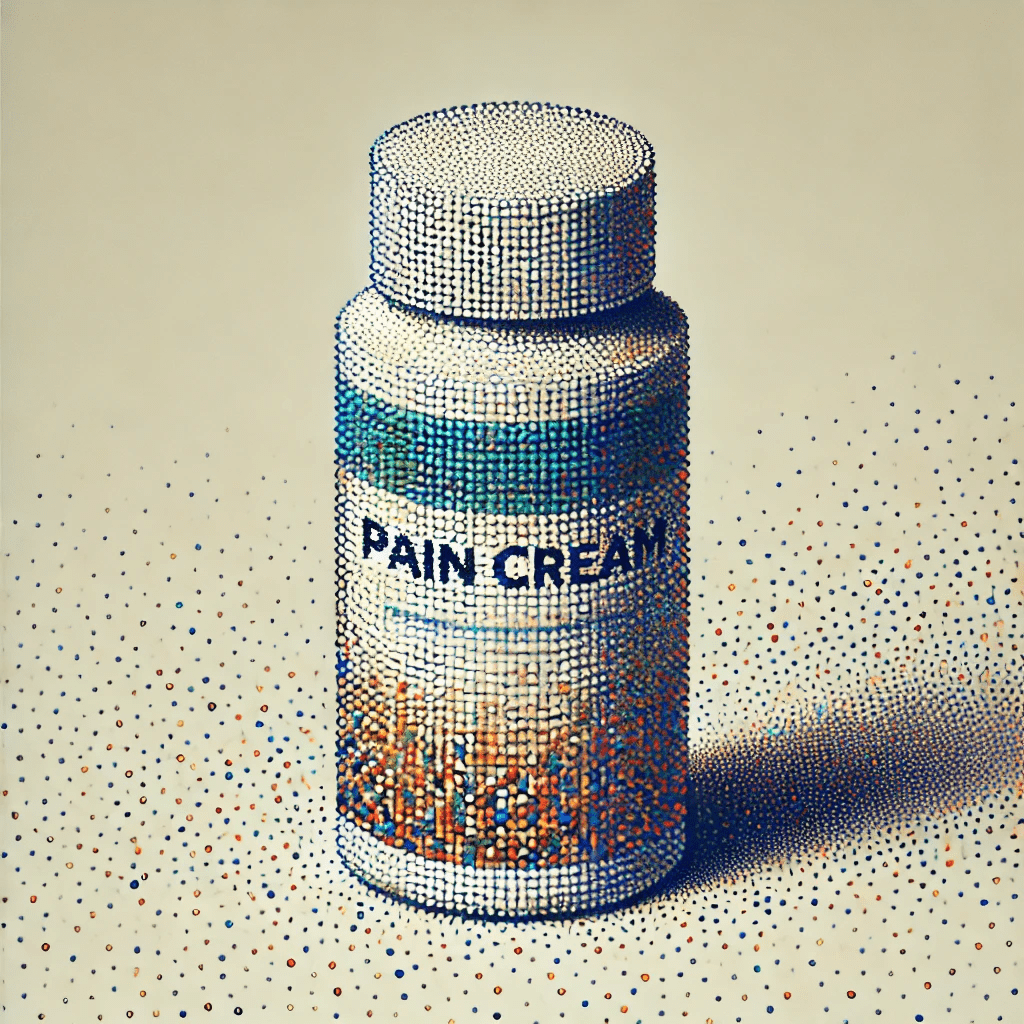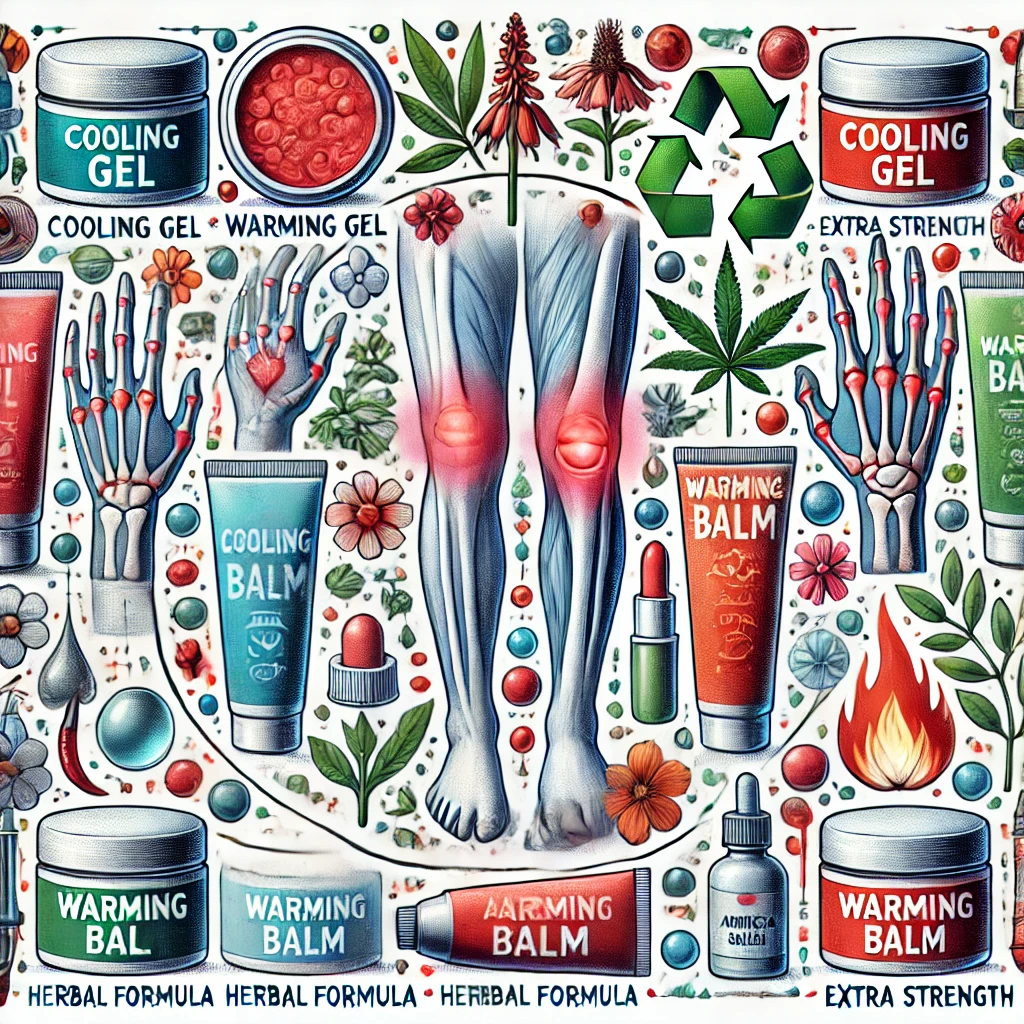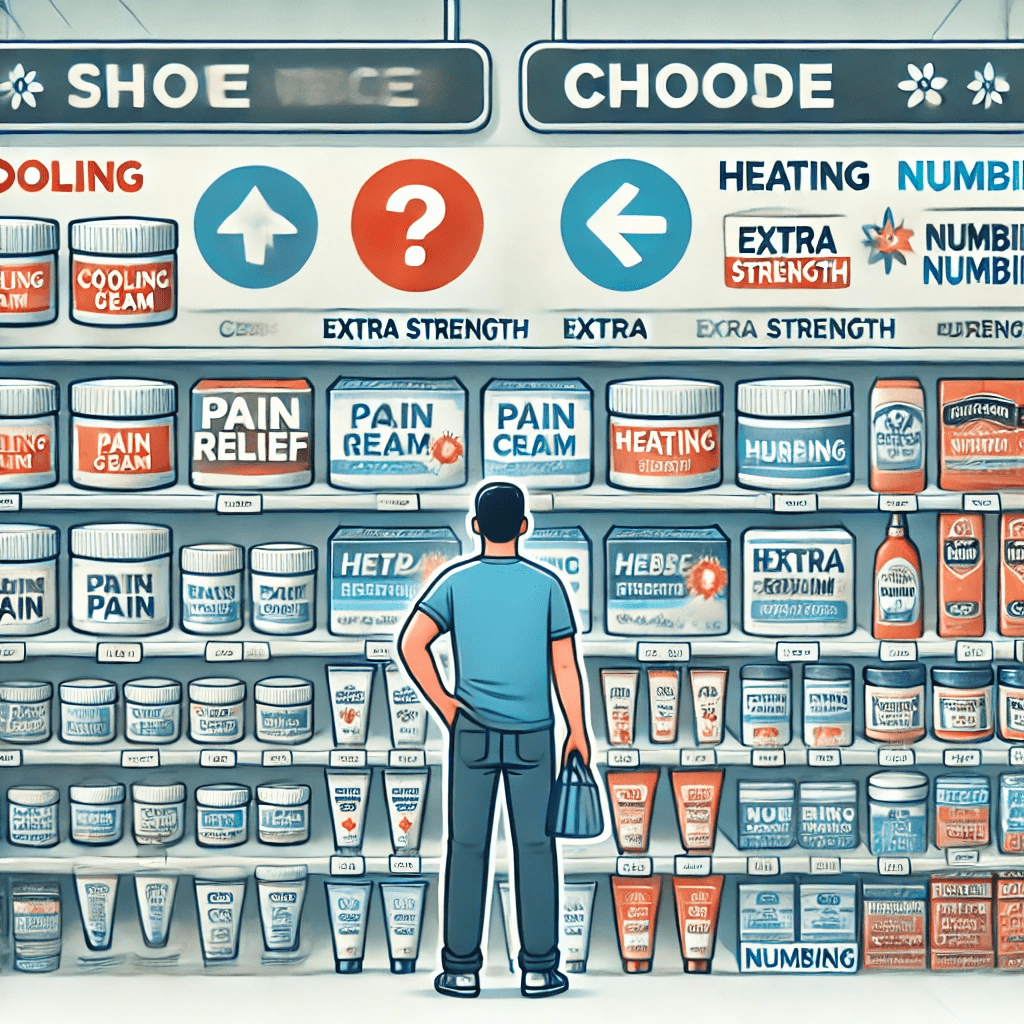Intro To Choose Pain Relief Cream.
Pain relief creams are a popular choice for easing everything from minor aches to more stubborn pain. These creams are easy to apply directly to the sore area, delivering active ingredients where you need relief. Knowing their purpose and history can help you appreciate their benefits.
People have always looked for ways to ease pain. In ancient times, they used plant-based salves and ointments. As medical science improved, these remedies were updated, leading to today’s pain relief creams. Modern creams use advanced ingredients and formulas to work better.
Pain relief creams work in interesting ways. They may numb the area, reduce swelling, or create a heating or cooling feeling. These effects help block pain signals to the brain, giving you relief. Understanding how these creams work can help you use them more effectively.

Common Ingredients in Pain Relief Creams
Pain relief creams use various active ingredients to help relieve pain. Knowing what these ingredients do can help you pick the best product for your needs.
Menthol.
A common ingredient that creates a cooling sensation, which can distract you from pain and make you feel better. The minty smell is also relaxing for some people.
Capsaicin.
A compound from chili peppers, works by reducing the sensitivity of nerve receptors that sense pain. It may cause a warm or burning feeling at first, but many users find it provides long-lasting relief.
Lidocaine.
Known for its numbing effect. It blocks nerve signals in your body, which helps reduce pain. This ingredient is great for intense, localized pain.
CBD (Cannabidiol).
Extracted from hemp, has become popular for its anti-inflammatory and pain-relieving properties. It offers a natural option for those who prefer to avoid synthetic chemicals.
When choosing between natural and synthetic ingredients, both have their benefits. Natural ingredients like arnica or eucalyptus oil offer gentle pain relief with fewer chemicals. Synthetic ingredients are often tested for effectiveness and can provide strong, targeted relief.
By understanding these ingredients, you can choose a pain relief cream that fits your pain type and personal preferences. Always check the ingredient list and do a patch test to avoid any negative reactions.
Types of Pain Relief Creams.
Pain relief creams come in different types, each made for specific needs. Over-the-counter creams are easy to find and work quickly for minor aches and pains. They are affordable and convenient for everyday use.
For stronger pain, prescription creams are available. These have higher amounts of active ingredients and are better for more serious pain. It’s important to talk to a healthcare provider before using them.
Herbal and natural creams are popular for those who want to avoid synthetic chemicals. These creams use plant-based ingredients and essential oils. They may take longer to work but are preferred by many for managing ongoing, mild pain.
Knowing the different types can help you choose the right one. Over-the-counter creams are good for occasional pain, prescription creams are for more severe pain, and natural creams offer a chemical-free option. With these choices, you can find the best solution for your pain relief needs.

Factors to Consider When You Choose Pain Relief Cream.
The type and severity of pain you have are crucial in choosing the right pain relief cream. For minor, occasional aches, over-the-counter creams may be enough. For chronic or severe pain, you might need a prescription-strength cream.
If you have sensitive skin or allergies, check the ingredient list for potential allergens. Always do a patch test with a new product to avoid any adverse reactions.
Pay attention to the active ingredients in the cream. Knowing whether menthol, capsaicin, lidocaine, or CBD works best for you can make a big difference. Some creams even combine multiple ingredients for a stronger effect.
Reading user reviews can give you real-world insights into how effective a cream is. While experiences vary, reviews often highlight common pros and cons, helping you find a more suitable product.
Cost is another important factor. Prices vary widely among pain relief creams, but a higher cost doesn’t always mean better results. Balance your budget with the type of relief you need to make the best choice.

Benefits and Drawbacks of Pain Relief Creams.
Pain relief creams are convenient because you apply them directly to the skin, avoiding the need to swallow pills and the risk of stomach issues. This makes them a great option for those who prefer non-oral pain management.
One major benefit is the potential for quick relief. Many creams work almost immediately, targeting pain right where it’s needed. This is especially useful for acute problems like muscle strains or joint pain.
However, there are some downsides. Pain relief creams can cause skin irritation, redness, or allergic reactions. It’s important to follow the usage instructions to reduce these risks.
When comparing pain relief creams to oral pain relievers, there are clear differences. Creams provide targeted relief with fewer body-wide side effects, but they may not be as effective for widespread or severe pain. Oral medications spread the active ingredients throughout the body, which can be better for chronic, generalized pain.
Understanding these pros and cons helps you make an informed decision. Pain relief creams can be a useful part of your pain management plan when used correctly. Consider your specific needs and consult a healthcare professional if you’re unsure.

How to Use Pain Relief Creams Effectively.
Using pain relief creams correctly is crucial for getting the best results. Start by cleaning and drying the affected area to help the cream absorb better. Apply a small amount and gently massage it into the skin until fully absorbed.
Follow the dosage and frequency guidelines on the product label or as directed by your healthcare provider. Using too much or applying it too often can cause skin irritation or reduce the cream’s effectiveness. Sticking to the recommended amount and timing helps you get the relief you need without added risks.
Be careful where you apply the cream. Avoid broken skin, eyes, and mucous membranes, as applying it to these areas can cause discomfort or harm. Always wash your hands thoroughly after applying the cream to prevent accidental contact with sensitive areas.
It’s important to understand the warnings and precautions. Check for any potential interactions if you’re taking other medications. If you are pregnant, nursing, or have health conditions, consult a healthcare professional before using a new topical treatment.
Proper application is key to using pain relief creams effectively. By following these guidelines, you can maximize the benefits while minimizing risks, ensuring safe and effective pain relief.

Expert Recommendations and Testimonials.
Listening to advice from medical professionals can help you choose the right pain relief cream. Doctors and pharmacists know which products work best for different types of pain and can give you personalized recommendations based on your medical history.
Patient testimonials offer real-world insights that can be very helpful to Choose Pain Relief Cream. These firsthand accounts can reveal pros and cons you might not find in product descriptions. Look for patterns in these reviews, like consistent praise for effectiveness or common issues with side effects.
Case studies provide detailed examples of how different pain relief creams work in various situations. They often include information about how to apply the cream, the right dosage, and the results. While not every product has case studies, those that do can give you valuable insights into how well they work.
By combining expert advice with real-world testimonials, you can get a well-rounded understanding of a product’s potential. Consulting with professionals and paying attention to user feedback helps you make a decision you can feel confident about.

Alternatives to Pain Relief Creams.
Physical therapy is an effective way to manage many types of pain. It uses targeted exercises and manual therapies to relieve symptoms and improve mobility. By addressing the root cause of pain, physical therapy can offer long-term benefits.
Oral pain medications are another common choice. These include over-the-counter drugs like ibuprofen and stronger prescription medications. While they provide whole-body relief, they can also cause side effects like stomach issues or dependency.
Acupuncture, an ancient practice, involves inserting fine needles into specific points on the body to balance energy. It has been shown to help with various pain conditions. Although it requires a trained practitioner, many people find it a valuable part of their pain management routine.
Heat and cold therapies are simple yet effective for pain relief. Heat helps relax muscles and increase blood flow, while cold reduces inflammation and numbs the area. These therapies are especially useful for acute injuries and can be easily done at home.

Conclusion and Final Thoughts To Choose Pain Relief Cream.
Choosing the right pain relief cream needs careful thought. Consider what kind of pain you have, the ingredients in the cream, and any possible side effects. Knowing how these creams work and reading expert advice and reviews can help you make a good choice.
If the cream doesn’t work for you, other options like physical therapy, oral medications, acupuncture, or using heat and cold can help with pain.
Your health is important, so don’t hesitate to ask a doctor for advice that fits your needs. Staying informed and taking action can help you manage pain better and live a more comfortable life.









